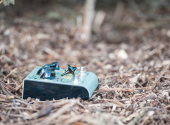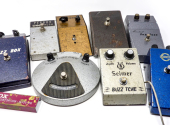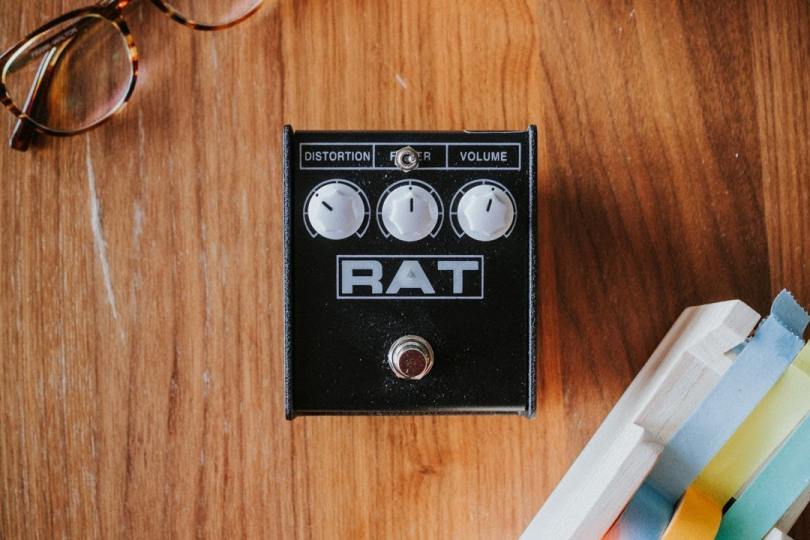
Guitar Effects Guide #4: Variations on Pro Co RAT
There are few guitar effects which can claim to have made modern music history. Or that they have directly contributed to it. One effect that can be described that way is the black pedal with the punchy name RAT, which hit the market in the late '70s and early '80s and continued to shape the sound of many guitarists with its distinctive tone for at least another three decades.
As it happens, the best things tend to be simple. The RAT is made up of a very simple circuit that is very similar to another classic – the Boss DS-1. However, the main difference in the earlier models was the use of Motorola's LM308 OP amp chip, so the RAT sounded much more like something between a distortion pedal and a fuzz. Another interesting feature is the Filter potentiometer, which works exactly the opposite way to the standard Tone potentiometer. At the time of its creation, this was a very unique-sounding pedal that subsequently became an integral part of the sound of artists such as Jeff Beck, David Gilmour, Andy Summers and later Kevin Shields.

Pro Co RAT2
The RAT2 version appeared on the market in 1988 and is still in production today. However, between 2002 and 2003 the LM308 chip was discontinued as the core of the circuit and in 2008, production moved to China. Thus, the new RAT has little in common with the original one, and sonically the differences are easy to find.
And why should you buy the current version of the RAT and not some boutique clone with better parts and the original chip? Let's look at it rationally: the main reason is probably price. The current version of RAT2 can be bought for under 120 euros and second-hand for much less. Above all, if you haven't had anything to do with this effect and would like to try the sound that thousands of musicians have fallen in love with in the past, this is a great start.

Jam Pedals Rattler
If, on the other hand, you'd like to be as close to the original RAT as possible and don't mind a slightly higher price, definitely don't hesitate and go for the Rattler from the Greek boutique company Jam Pedals. This effect will surprise you with its headroom, whether you use it as a low gain overdrive or turn the main up to maximum. As with the original RAT, the core of the circuit here is a rare LM308 chip. What's more, you can get all this in a much smaller, lighter and more pedalboard-friendly form.
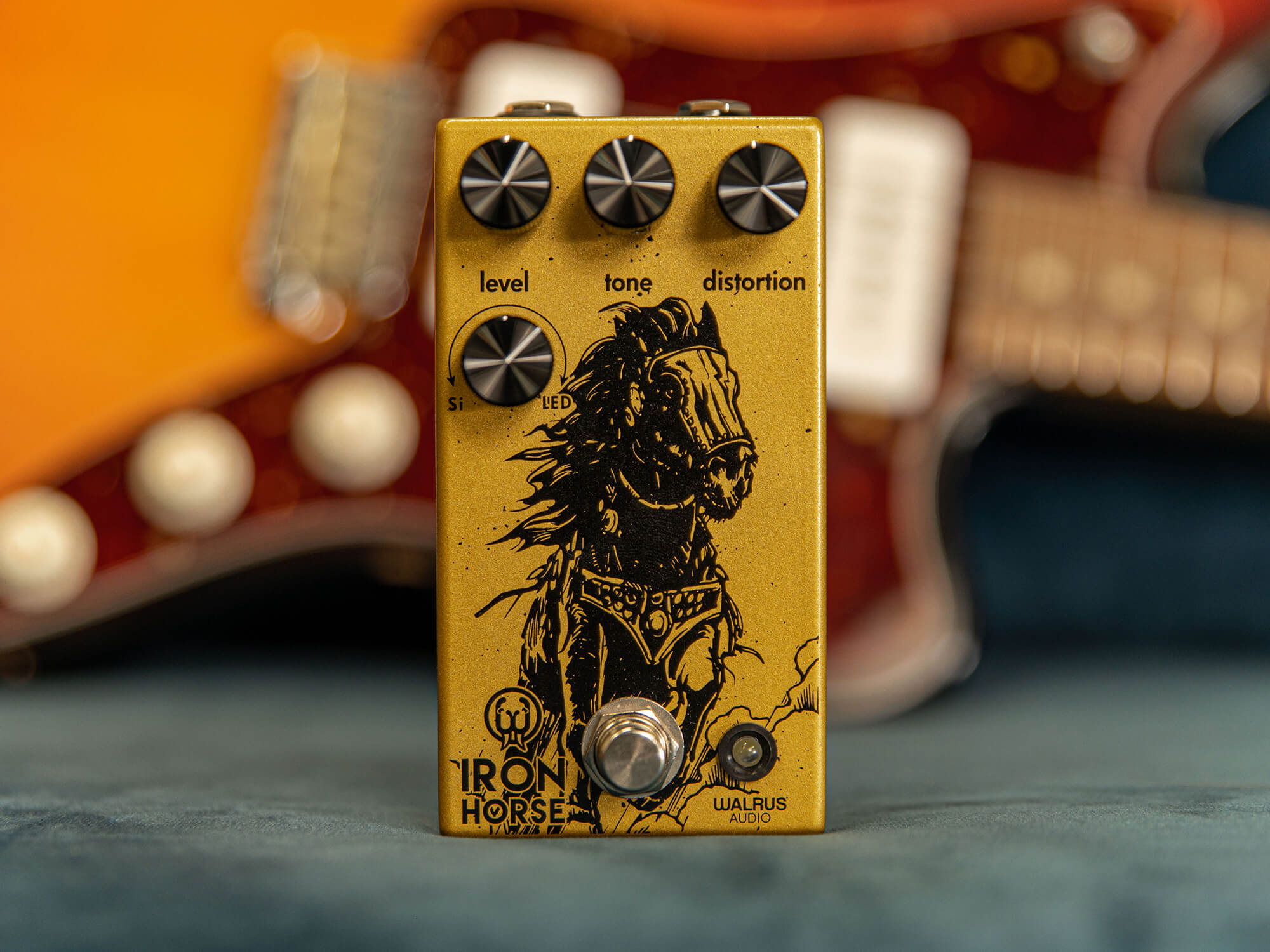
Walrus Audio Iron Horse V3
The Walrus Audio brand has been known for years for its innovative approach, trying to enrich even the most ordinary effects with some new possibilities or features. The same is true in this case. The first generation received great reviews when it was launched, but it wasn't until the third generation that Walrus achieved perfection.
Instead of the former switch, there is now a potentiometer where you can smoothly choose between Silicon and LED modes and mix the ratio as you like. The 100% Silicon mode is quieter, much more compressed and probably closest to the original RAT. LED, by contrast, is incredibly loud, open and with incredible headroom, so in this mode, the Iron Horse convincingly succeeds even as a mid-gain overdrive. Pedalboard nerds will appreciate that the input and output jacks have been moved from the sides to the top, saving you some space. The core of the circuitry of this "iron steed" is, as with the Rattler, the original LM308 chip, but unlike that, this is not a clone – rather, it is loosely inspired.
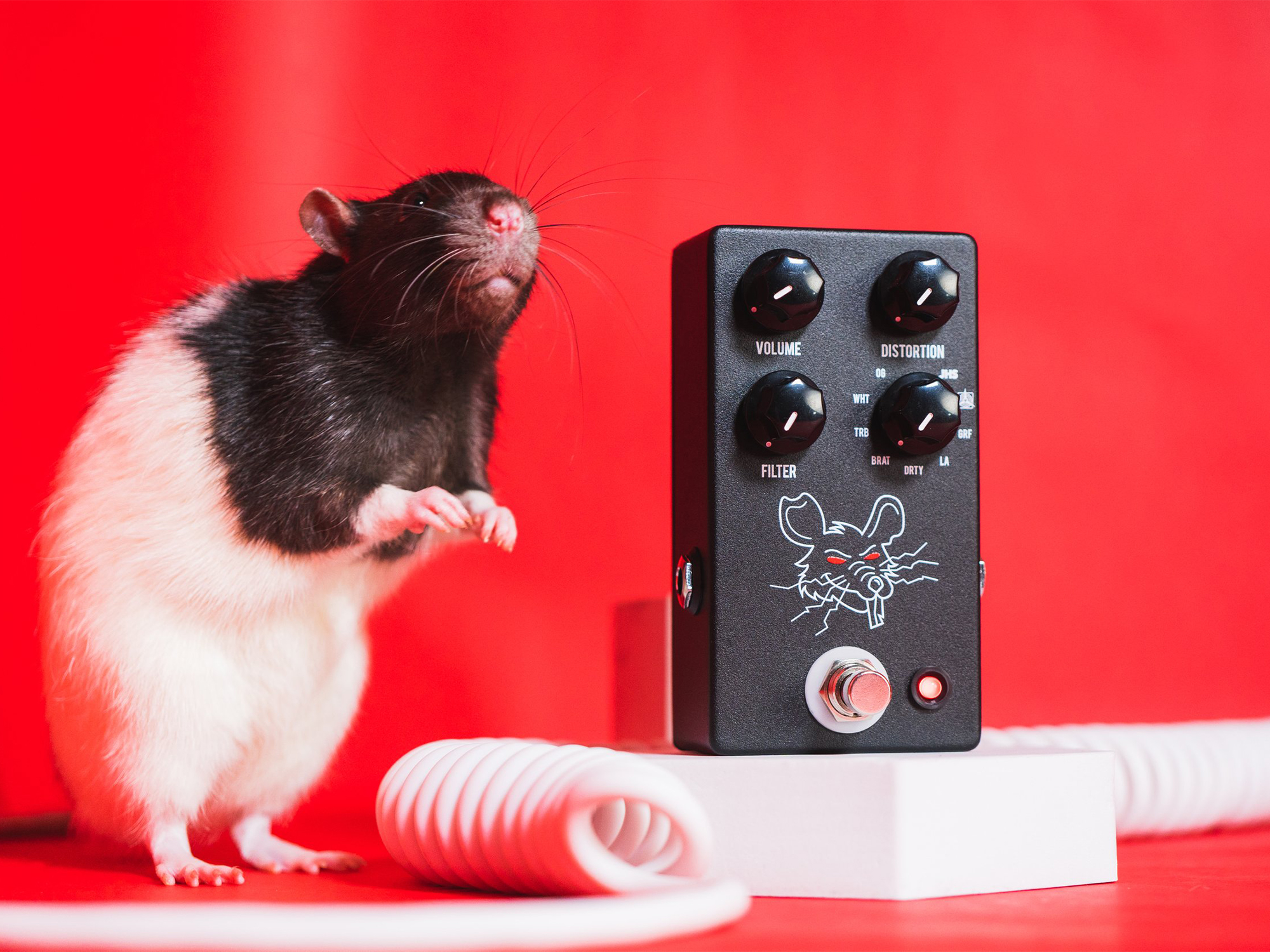
JHS PackRAT
If you've always wanted a RAT but didn't know which one or wanted to hear all the possible options, then read no further. This option from JHS is for you! You can choose from a total of nine variations from the very original version to the classic "white face" RAT or the special JHS modified version. In the demonstration, you can see that there is actually no difference between the various RAT pedals and their versions included in the JHS PackRat.

Electro Harmonix Flatiron Fuzz
The name of this pedal is a bit confusing, because in this case it is not a fuzz, but a clone of the RAT, but that probably won't bother most people. When I first heard the Flatiron, I was surprised at how much bass it had. So with some types of humbuckers or amps, you have to keep the filter almost at a minimum. I also missed that rawness of a classic RAT when I tried it, but otherwise, it is an interesting take on the classic RAT sound and definitely worth the money.

Mooer Black Secret
Chinese Mooer has come up with a very interesting pedal. After a bit of tuning, their RAT clone sounds basically the same as the new RAT2 from ProCo, but unlike that one, you can also switch between Vintage (the original white face RAT) and Turbo (Turbo RAT) modes. All this for less than 60 euros, which is definitely a very interesting option for anyone looking for the right RAT sound and wanting to save money.
If you have found an error or typo in the article, please let us know by e-mail info@insounder.org.


